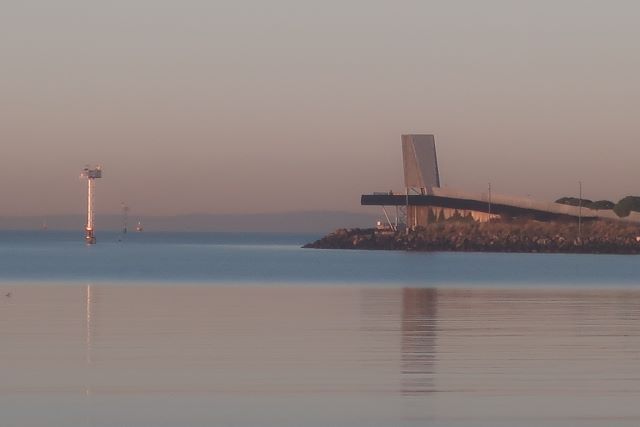
Port observations
Sunny days entice bike wandering. The Webb Dock observation deck beckoned from Sandridge Beach.
At low tide, the sharp angle at which the Sandridge Beach meets Webb Dock creates a rich fishing place for birds. Silver gulls gathered in large numbers, working the wet sand with their webbed feet. Cormorants perched alert on the boulders edging the path. Human fishers claimed the wooden fishing platforms along the path. People were out walking the generous Webb Dock path, the sun on their back.
Ironically, the Webb Point observation deck, built as part of the community contribution of the Port Capacity Project in 2015, does not permit observation of port operations, security being the key. The autonomous cranes dwarf the prominence of the structure.
Turn the corner at the Webb Point observation deck and Williamstown comes into view. The horizon opens up. The path becomes more interesting. Rounded noon flower Disphyma crassifolium drapes over the rocks. The revetement, damaged in a storm, has been repaired, the rocks placed with great skill.
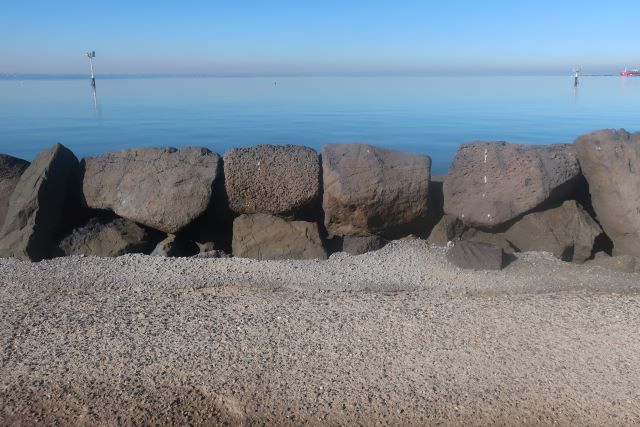
At the end of the path is Phoebe, a container ship being unloaded by one of VICT’s1 autonomous cranes. Phoebe, flagged in Liberia, was built in 2005. If the average age of container vessels is 10.6 years2, then Phoebe is getting on. Container vessels are hugely expensive and the future must be anticipated in ordering them. When this container ship was ordered from a South Korean shipbuilder, priorities were different. Now some far sighted ship owners are ordering vessels in a de-carbonising environment to run on low and zero emission fuels which do not yet exist in commercial quantities.
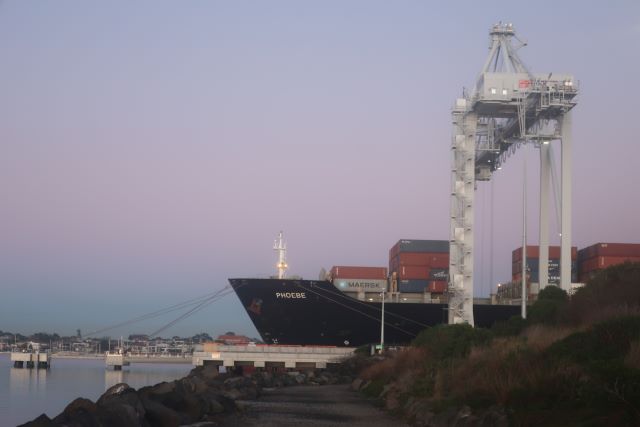
The health of the ports of Melbourne and Victoria and the Victorian economy have always gone hand in hand. The pandemic has put a dent in the steady upward curve of growth in the Victorian economy. Our reliance on shipping has been revealed – by the pandemic, the war in Ukraine, the Covid shut down of Chinese ports. Freight rates from Shanghai to Melbourne have increased 484 per cent from August 2019 to August 2021.3 And on this vessel will be seafarers. Always important to acknowledge them when face to face with a container ship.
2030
2030 is a milestone carrying as much freight as the turn of the century. 43% by 2030. The government is seeking to legislate 43% reduction in greenhouse gas emissions on 2005 levels when parliament resumes. 2030 is also the date by which the Port of Melbourne anticipates more container capacity will be required. The Port’s forward development strategy aims to have freight on rail from Webb Dock by 2030.
At a meeting of Port industry stakeholders this week, Port of Melbourne CEO Saul Cannon noted the great advantage to Melbourne that the Port of Melbourne is a city port. Many cities around the world have moved their ports out of city centres. But this strength is equally a great challenge. A recent Port of Melbourne study found that most containers have their destination in metropolitan Melbourne, with the greatest percentage in the west of Melbourne. Cement comes into the Port of Melbourne close to where it is needed on building sites around Melbourne.
Nearly all of those containers destined for locations in metropolitan Melbourne leave the Port on trucks. In 2019 more than one million trucks visited the Port to drop off or pick up containers at the international and Tasmanian terminals. As container volumes grow, so will truck movements. The container logistics study also found that 39% of all vehicles leaving the Port were one truck with one container – a massively inefficient way of transporting freight. For the Port to grow at Webb Dock, the landside issues will need to be resolved. That is why the Port is aiming to deliver a Webb freight rail link by 2030.
This week, in Geelong, the Minister for Ports and Freight, Melissa Horne, released the Victorian Commercial Ports Strategy, Navigating our Port Future. Geelong is the new home of Ports Victoria, as it will be of the Spirit of Tasmania. The strategy outlines the role and priorities of government in relation to Victoria’s four commercial ports: the ports of Hastings, Geelong, Melbourne and Portland. Even though the Port of Melbourne has been leased, the Government retains a role in planning for the Port’s future.
Priorities include securing land and waters at Bay West for a future container terminal which will be needed around 2050, stronger planning controls to ensure the Port can continue to operate, and ensuring access to and from the port by road and rail.
And if you’re not interested in the words in the strategy, take a look at the fantastic port imagery.
1 Victorian International Container Terminal
2 The development of containers ships MC Containers
3 Navigating our Port Futures: The Victorian Commercial Ports Strategy, July 2022 accessible from this page. p10

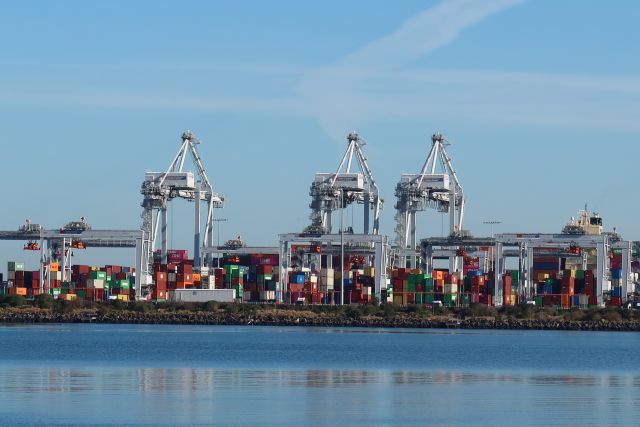
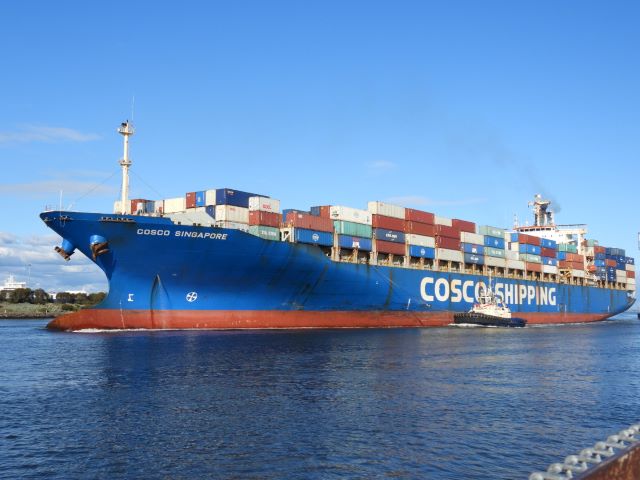

John Milne
Tell me Janet, How do commuters on The Spirit get to and from it when leaving and arriving in Geelong. Do they drive down to there, and vice-versa, which is how travellers to and from Avalon Airport manage that I'm told? What day does The Spirit start leaving from Geelong and cease travel from Port Melbourne? Thanks.